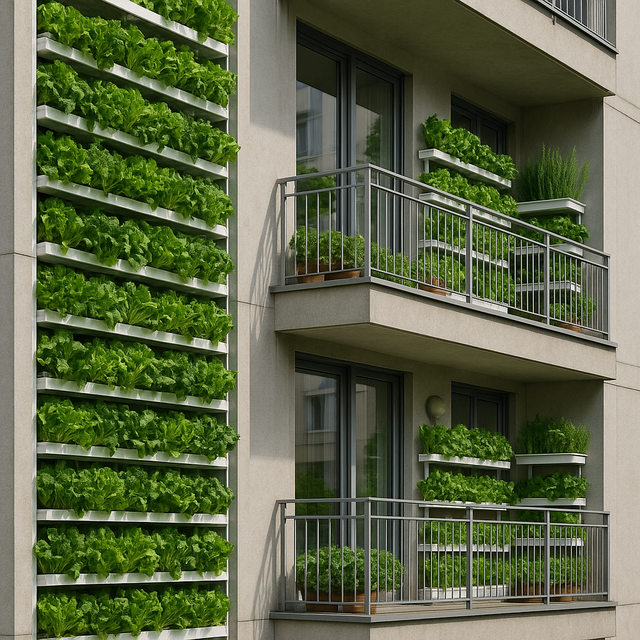
Urban vertical farms are reinventing the concept of agriculture within urban spaces, transforming our buildings and balconies into food production environments. Instead of relying exclusively on long transportation and long supply chains, these high-altitude mini-farms allow us to grow vegetables and herbs right where we live.
Traditionally, agriculture has been a rural activity, but with the advancement of hydroponic and aeroponic technologies, our flora and food can flourish vertically, utilizing areas that until yesterday remained unused.
The environmental benefits are visible and measurable: water consumption is reduced by up to 90% compared to terrestrial farms, as the recirculating system recovers and recycles water fluids. By eliminating the need for large agricultural land, vertical mini-farms reduce deforestation and degradation of natural habitat. Most importantly, zero-kilometer farming reduces air pollution and carbon emissions, because the product is not processed and packaged far away, but the harvest is served near the table of every citizen.
From a technical point of view, the installation of vertical farms in buildings is combined with LED lighting of the spectrum suitable for photosynthesis, temperature and humidity control, as well as digital monitoring. Hydroponic applications, where the roots are fed directly from nutrients dissolved in water, eliminate the need for agricultural soil and minimize the risk of disease. For those who only have a small balcony, there are modular models of vertical shelves, on which various plants can be grown – from salads and aromatic herbs to peppers and miniature tomatoes.
Real-life examples come from cities like Singapore, Paris, and New York, where large residential and office buildings have been equipped with vertical farms on their facades or roofs. In Singapore, the Sky Greens program has installed agricultural towers with slowly rotating wheels, exposing flowers to sunlight at all times. In Paris, several commercial buildings have built terrace gardens where the community can participate in a shared harvest. At the household level, a metal shelf, a water tank with a pump, and a series of pipes are enough to create a mini-food ecosystem.
However, there are challenges: the initial cost of installation and electricity for lighting is considered high, while nutrient treatment requires technical knowledge. However, as solar systems improve and production scales up, the price is expected to fall and the ability to use it at home is expected to expand. In the future, urban vertical farms could be an important part of urban infrastructure, ensuring fresh food, resilience to supply crises and a healthier environment for everyone.





